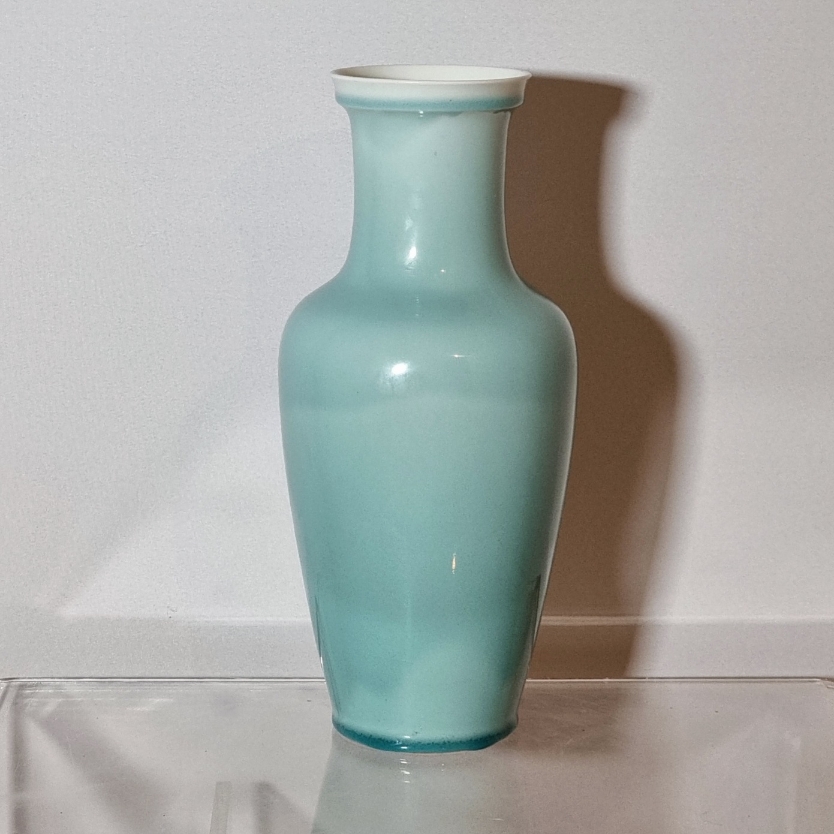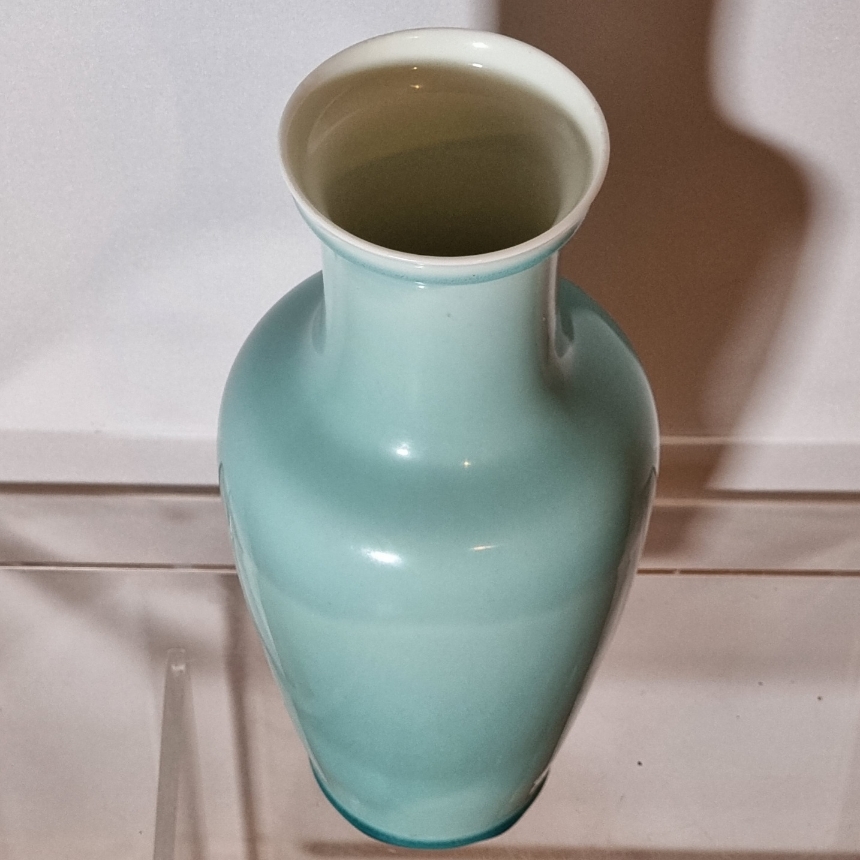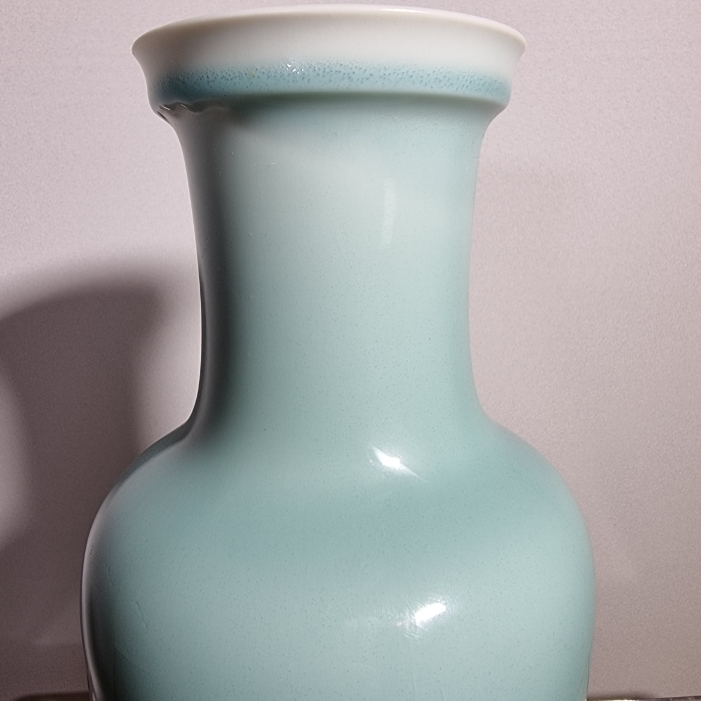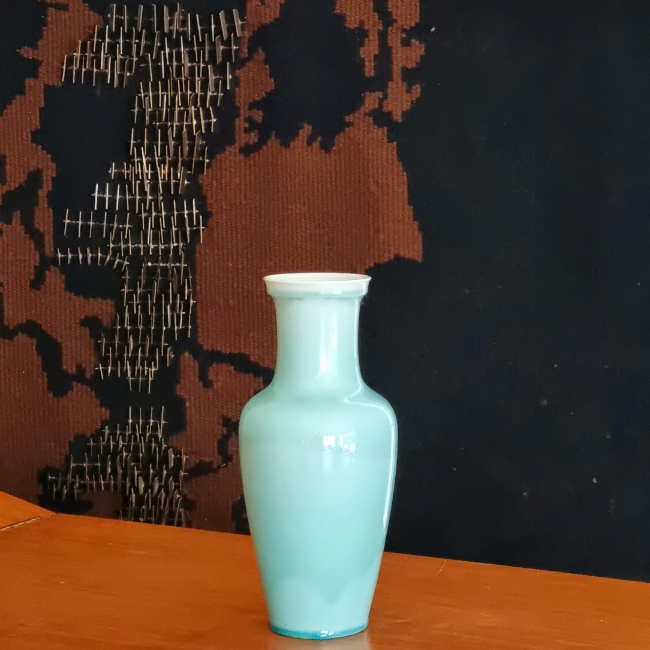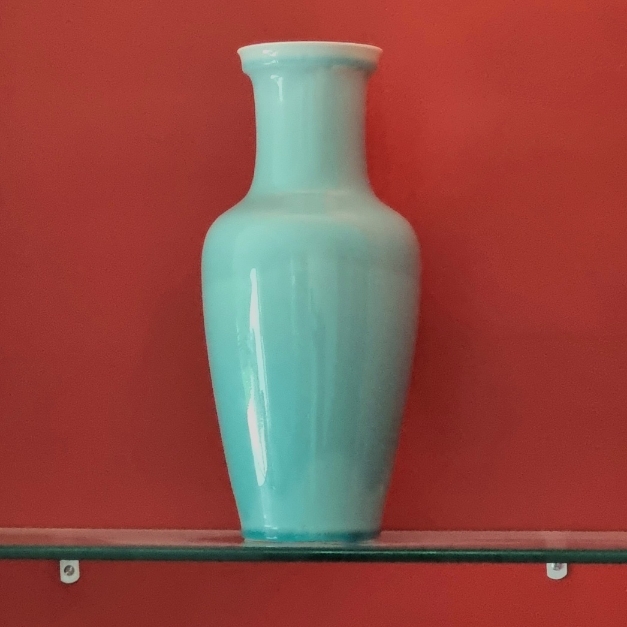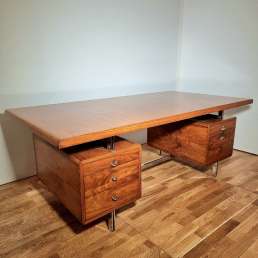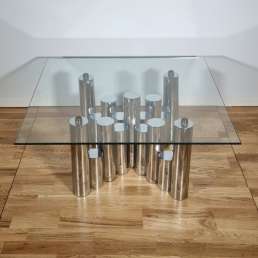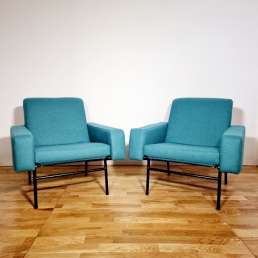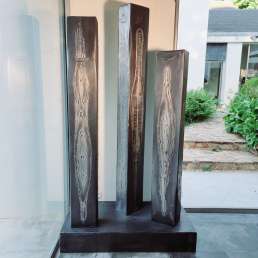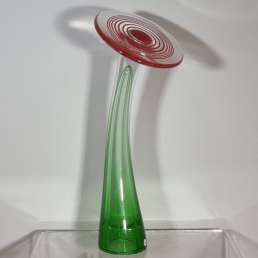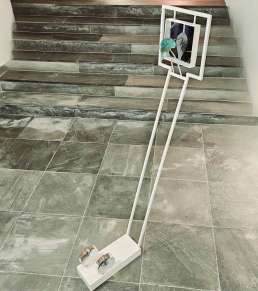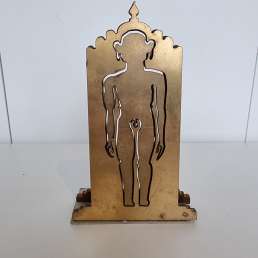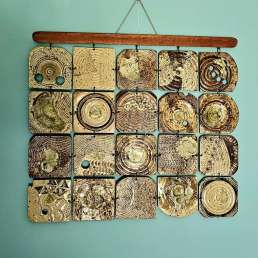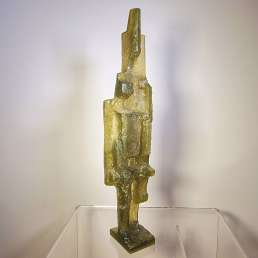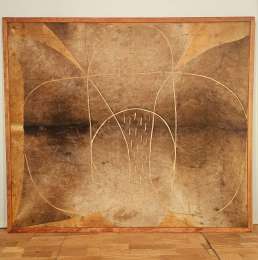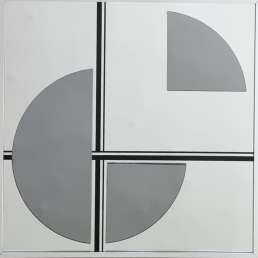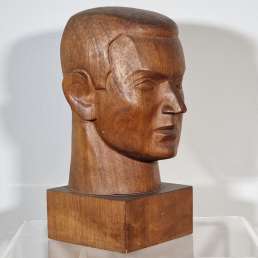Celadon blue porcelain vase from the Manufacture Nationale de Sèvres, 1887
Description
What I like
I like the purity of line of this baluster vase, with this very slightly concave neck, underlined by the same white color that lines its interior and contrasts with the enamel of the body.
This enamel, precisely, has an extremely delicate color, between blue and light green, with very slight variations and a slight network of lines. This vase is endowed with a simplicity of line which makes it possible to concentrate on the color of its enamel: this blue or green, it is according to the opinions, is slightly powdered by place, with sometimes a light mesh almost invisible; in any case, it is never the same color and this truth is accentuated by the ivory collar and the darker base.
The Manufacture has, since its creation, sought to imitate Chinese porcelain; and in the 19th century, the great chemists such as Alexandre Brongniart developed new enamels, including the famous sang de boeuf, and this celadon as well as new pastes.
What mastery of cooking and paste: this is a kaolin paste, or hard porcelain.
Technical description
Manufacture Nationale de Sèvres – 1997
Baluster vase in hard porcelain, the belly and the shoulder in celadon blue, small slightly concave neck enamelled ivory as well as the interior.
Mark in ink S 87 in an oval cartouche, engraved E 87 8 PM, number 106 painted in black.
A run of enamel causes a very slight protuberance at one place of the base and the barred cartouche as well as the number 106 may suggest that this beautiful vase may have been considered defective.
Dimensions and weight
Height: 36 cm- Width: 16 cm- Depth: 16 cm
Weight: 1,8 kg
Mix & Match
This beautiful vase has a great purity of line and its decoration plays on the very subtle variation of the same color: as a result, it can be integrated everywhere, in all interiors.
Of course, we can use it to put flowers, quite simply! But I prefer to use it as a support for meditation or as a chromatic element whose only place in a set of varied shapes and colors matters! For me it is a work of art!
Place it between two peacock blue G10 armchairs by Pierre Guariche, and an extremely refined set is made up. On the desk of the Banque de France, this vase will bring a welcome touch of color to walnut and chrome!
On the “Cylinders” table in chromed metal from the 1970s, this vase, which is almost a hundred years older, does not distract. So true is it that an object, if it is right, finds its place everywhere.
Description
To know more
The designer
I do not know the inventor of the shape of this vase: moreover he refined a shape that comes to us from China and is all in all very classic. The decoration can be deployed there: either figurative, or just an enamel, in both cases, a person of great talent whose name I do not know either.
The editor
The Manufacture de Sèvres has a very long history. Initially installed in 1740 in Vincennes, it took up residence in Sèvres in 1756 with the support of Madame de Pompadour, was completely bought by King Louis XV in 1759 and became Manufacture Royale. Indeed, all the princes dreamed of producing porcelain as beautiful as that of China, the purchase of which unbalanced the balance of payments. We developed soft pasta to imitate China, as well as biscuits. An emulation ensued, of which one of the protagonists, Böttger discovered kaolin porcelain, therefore the Chinese recipe, that is to say translucent and sonorous, and porcelain from Saxony was the pioneer at the beginning of the 18th century. Which annoyed Louis XV.
The discovery of kaolin in 1768 enabled the Manufacture to add a new production in hard porcelain to soft paste and soft paste biscuit.
In the 19th century, Alexandre Brongniart, chemist and director of the Manufacture, an Imperial moment, developed the latter enormously. Many innovations were born, both in terms of pastes, enamels, new techniques during the 19th century. Our vase is part of this line, shortly after the Manufacture moved to its current premises. We know his successes in the 20th century, and his ability to collaborate with the greatest designers (Ruhlmann among others) or with the greatest artists. In 1995, for example, there was a collaboration with the Galerie Nationale du Jeu de Paume, dedicated to modern and contemporary art with creations by Olivier Debré, Pierre Alechinsky, Charles Simonds, Lee Ufan, Arman and Philippe Favier.
A beautiful and authentic work of art at a fair price
This vase has been carefully selected for its aesthetic qualities, its originality and its fair price. Our choice favors above all the acuity of the design and the quality of the realization, guaranteed by the production by the Manufacture Nationale de Sèvres, guarantee of a valorization of your new acquisition in your interior and of an ability to dialogue with your furniture, to match and mix to create a unique decoration.
Buying quality old objects is surely a reasonable investment, so great is the appetite for the most refined objects.
Finally, buying old works of art preserves the resources of planet earth.
Additional information
| Weight | 2 kg |
|---|---|
| Dimensions | 15 × 15 × 36 cm |
| Epoque | |
| Matières | |
| Editeur |


